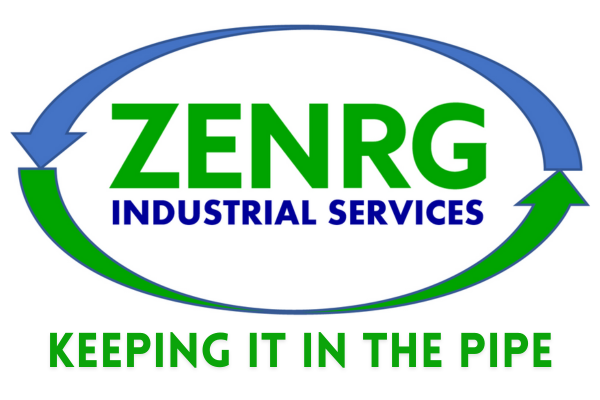Resources
Brochures
Case Histories
WELL INTERVENTION GAS CAPTURE
- Eliminates methane venting to the atmosphere
- Retain hydrocarbons for Sales
- Saves workover rig & crew time
- Eliminates need for extra open top containers& associated clean-up costs
Well Liquid Unloading
- Eliminates methane venting to atmosphere
- Eliminates need for swabbing operation
- Eliminates need for CNG backside injection
FRAC PLUG DRILL OUT GAS CAPTURE
- Eliminates methane flaring
- Retain hydrocarbon for sales
- Non-intrusive to the drill-out operation
Prover Product Capture
- Eliminate flaring product
- Retain hydrocarbons for Sales
- Reduces exposure to workers
- Reduces associated clean-up costs
Salt Dome Liquid Propane Capture
- Eliminates flaring product
- Retains hydrocarbons for Sales
- Eliminates fire risk and mitigation procedures
Ship Loading Arm Liquid Propane Capture
- Eliminates product flaring
- Retain hydrocarbons for Sales
- Eliminates exposure to workers
Bullet Tank Product Capture
- Retains product
- Eliminates need for using vacuum trucks
- Eliminates associated clean-up costs & environmental risk
Pigging Launcher/Receiver Gas Capture
- Eliminates methane venting
- Saves hydrocarbon product for sales
- Minimal impact to workflow vs. venting
FAQs
ZENRG’s current fleet of equipment includes the full line of cross-compression units from ZEVAC and a portable 2 throw, 3 stage reciprocating compressors.
ZENRG compresses the fluid (liquid or gas) and discharges it into another section of pipe or adequate vessel capable of handling the product within close proximity to the suction point. ZERNG never leaves location with any of the customer’s product.
The ZEVAC units can move any phase of fluid from 100% liquids to 100% gas or any percentage of multiphase and the Reciprocating unit can move dry or slightly wet natural gas.
A typical crew includes 1 certified / qualified technician. However, this may vary, depending on job complexity, the number of cross-compression units required, and auxiliary equipment required.
Yes, we are on 24 hour call and available to work 365 days a year and around the clock 24 hours a day provided the location is equipped with adequate lighting and our crews can assure all safety controls are in place.
ZEVAC can handle most fluids (liquid or gas that is compatible with Viton seals including all light to heavy hydrocarbons
The flow rates are dependent on several factors. Differential pressures, the difference between the suction pressure and discharge pressure, has the largest impact on flowrates, but other factors such as inclusion of filters, air compressor size for ZEVAC power source, distance from suction point and discharge point, and connection sizes available are also factors that will play a role in flowrate. The best way for making this determination is to provide the data for the project of interest to model the estimated time it will take to complete the job.
he flow rates are dependent on several factors. Differential pressures, the difference between the suction pressure and discharge pressure, has the largest impact on flowrates, but other factors such as inclusion of filters, air compressor size for ZEVAC power source, distance from suction point and discharge point, and connection sizes available are also factors that will play a role in flowrate. The best way for making this determination is to provide the data for the project of interest to model the estimated time it will take to complete the job.
All of our equipment is rated to ANSI 600 (1440 psi) and had have overpressure shutdowns as well as PSVs
Our typical connections are ½ inch to 2” but special accommodations can be made for other connection sizes and types.
Yes, they can be measured on a per application basis.
During purging, there will be a mixing until the purge is complete. On a ZEVAC application -During operation, a “double block and bleed” seal mechanism is used, which is common on compressors. The air system is sealed with one set of seals, and the gas system is sealed with another set, and in between there is a vent path. So, if either system leaks, the gas will flow out the vent. The leaking side will never be able to flow into the other pressurized system.
The ZEVAC is electrically bonded to the pipeline through the hoses, which are electrically continuous. If the pipeline is grounded, the ZEVAC is grounded. If the pipeline is on cathodic (or some other electrical system), we don’t want to ground out that system by grounding the ZEVAC and then bonding to the pipeline. If the user wants to bond the ZEVAC to something else (such as the ground), please be aware that the pipeline will also be grounded. Caution should be taken when connecting ZEVAC between two piping systems that have different electrical potentials (like a transmission line with induced AC, and a distribution line that is electrically isolated from it).
Yes, it is possible to run multiple units in parallel to decrease the pumping time for a project. The resulting impacting for adding a unit is proportional to the number of units run for the ZEVAC’s and Reciprocating compressors. For example, it will take 50% of the time when running 2 units in parallel, 33% of time when running 3 units in parallel, etc…
Yes. We can provide small tripod flare to trailer mounted flares to burn off residuals or interface during purging operations
The response time is largely dependent on the project location distance from ZENRG’s field locations.
All systems are equipped with check valves to prevent back flow.
Photo Gallery
NEWS Releases
ZENRG Industrial Services is pleased to announce its Board of Advisors. We are fortunate to have assembled this talented group of individuals …
Our Features
24/7 Availability
Experienced crews are available to operate 24/7 to meet your work schedule across a number of locations across the lower 48.
Proven Technology
Provides differentiated solutions, using “best fit” technologies for specific applications.
Safety Controls
Safety controls are a core part of our operations, from the equipment to our operational procedures.
Highly Specialized
Our crews are trained to industry and customer specific requirements and specialized to work with high pressure.
Why Choose Zenrg Industrial Services?
Customer Service…because we care!
The ZENRG Industrial Services leadership team has in excess of 100 years of experience providing services to customers in Oil & Gas.
- Reduces Risk
- Lowers Total Cost of Operation
- Enhances Environmental Leadership


